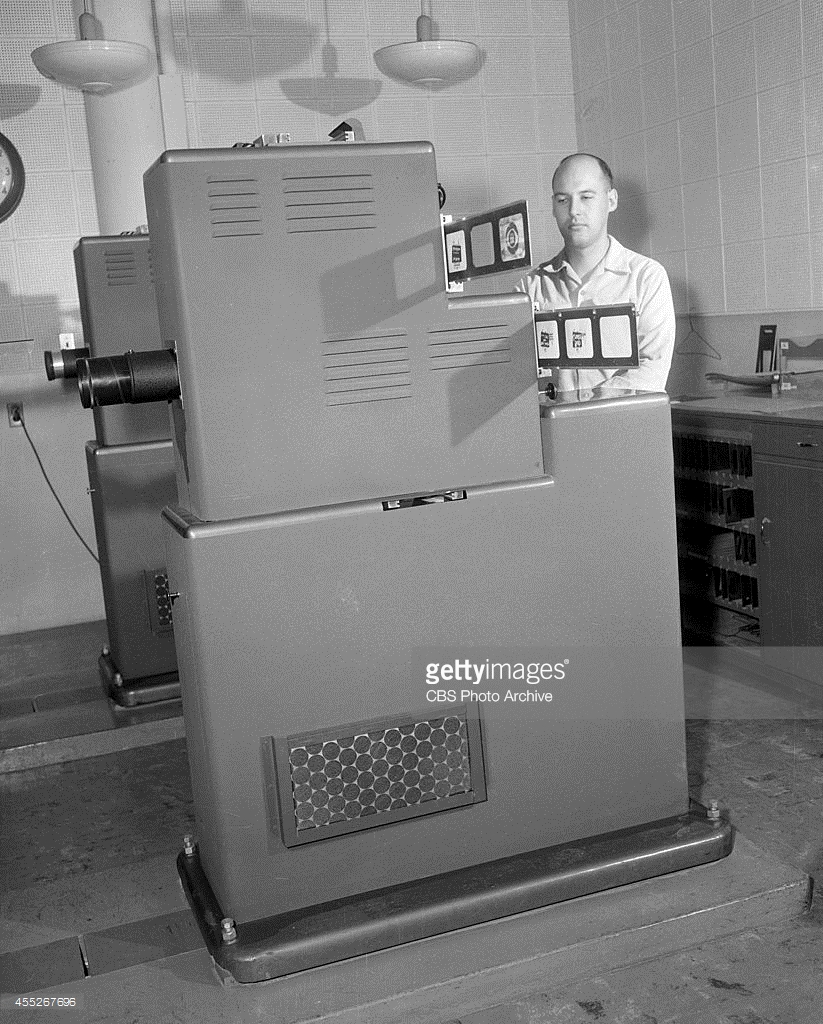
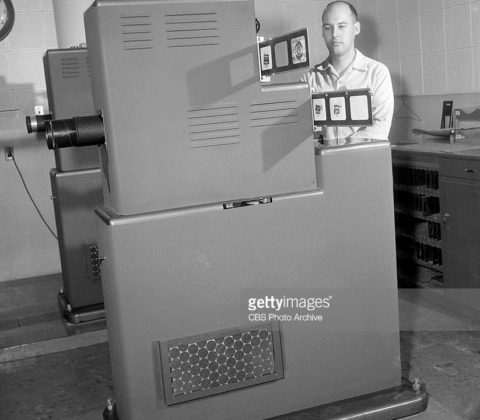
Gray Research Telop Machine, Television’s First Optical Projection System
Thanks to Val Ginter in NYC, here is a rare copy of the 1953 Gray catalog with a price list at the end. This machine was able to televise opaque cards, which was the forerunner of transparent slides. It also had add on features that would allow a news type horizontal ticker scroll across the bottom of the screen (on real ticker tape) and a vertical scroll for credits. All the networks depended on them heavily for station breaks and promos, and they were also widely used at local stations.
When it comes to the lower third of the screen, this was the first apparatus that could scroll text there. As you will see, it was an available accessory for use on the Gray Telop machines and the horizontal ticker crawl was done with 8MM film.
BUT! Before we go to the finished product, here is the CBS and NBC prototypes of this machine! The “CBS Shadowbox” design (below) was the version that Gray licensed to manufacture from CBS. This three-function machine allowed a live camera to shoot into the box and see, with the aid of moving mirrors, photo images, title cards and “rolling credits” on a drum. With no fader controls on the switching console in the control room, live dissolves could be done here manually with mirror movements and fading light sources in each of the three sections.

These two photos below show what I believe to be the next version of the baloptican projection element of the CBS prototype before licensing their technology to Gray. Thanks to Harry Moore and his Early Television and Television Hobby Experimenters Facebook site.
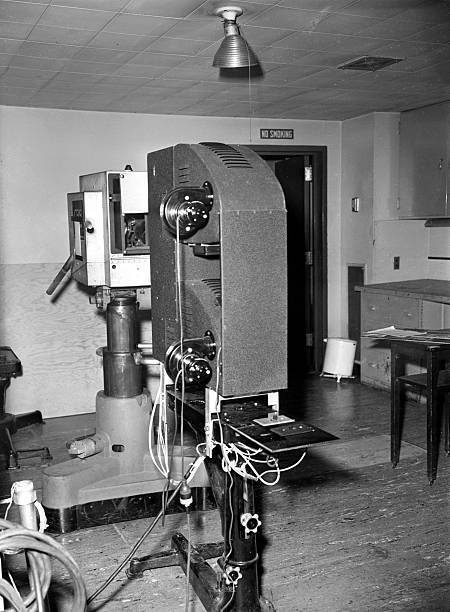
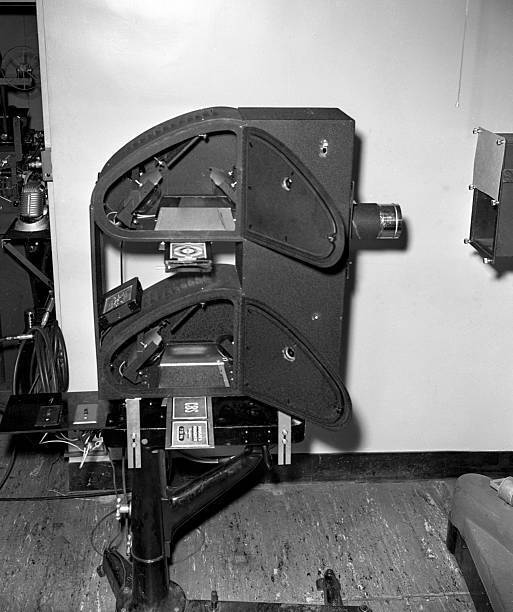
Below is the middle element of NBC’s three element version which was called the “title frame optical mechanical dissolve machine”.
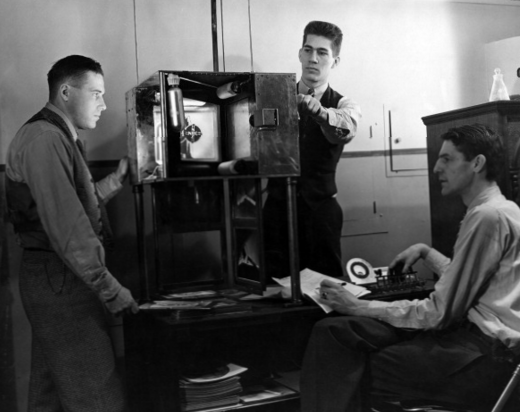
This brochure features images and a price list from Gray from 1953. The cost of the top-of-the-line Telop I was $3500…in today’s money, that’s over $31,100. CBS had a half dozen of these in their Grand Central headquarters. I’m pretty sure NBC and ABC used these too. There were two smaller, less expensive models for local stations as well and these were marketed mostly as production aids for creating spots, but at the network level, they were the main mechanisms for promos and billboarding upcoming shows and it was all done live during the breaks. The alternative would have been the RCA 35MM slide drums in a telecine chain, but I don’t know if they had those in the early 50s.